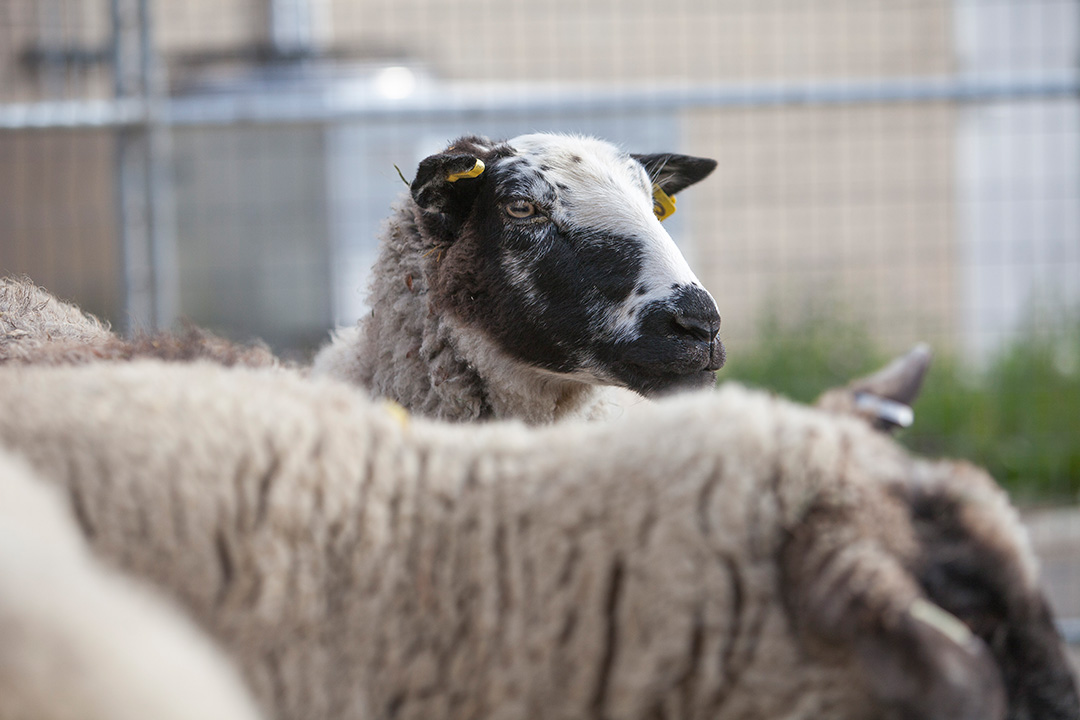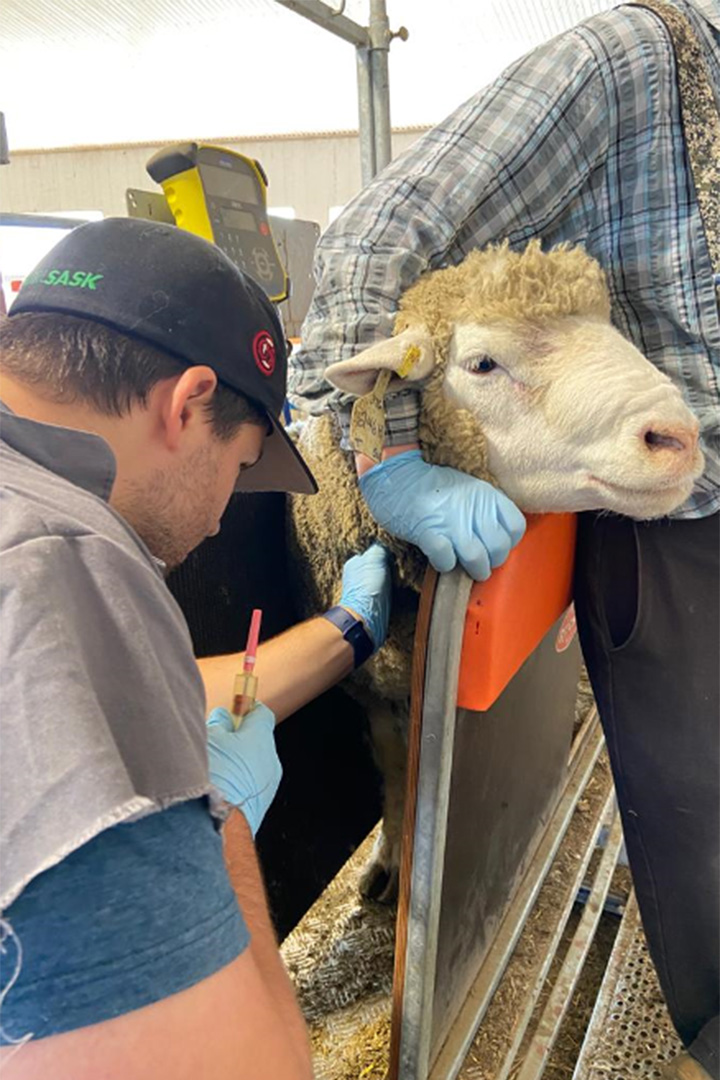
USask scientists study link between Brucella infection and poor semen quality in rams
A University of Saskatchewan (USask) research team has confirmed that the presence of bacteria — primarily Brucella ovis — is the culprit behind poor semen quality found in male sheep (rams).
By Matthieu TaillonThe Brucella ovis bacterium is a well-known cause of poor semen quality in various livestock species including cattle, bison, pigs, goats and sheep. It poses a significant economic threat to the livestock sector because it negatively affects semen quality and causes breeding problems.
Led by Dr. Dinesh Dadarwal (BVSc&AH, PhD), an assistant professor and theriogenology specialist at the Western College of Veterinary Medicine (WCVM), the researchers set out to investigate the impact of Brucella ovis on ram semen while also identifying any other factors that could affect semen quality.
The team also aspired to update the criteria for routine breeding soundness evaluations (BSEs) of rams to ensure that the benchmarks were suitable for intensive operations where rams are breeding year-round.
Breeding soundness evaluations are an integral part of the cattle industry, helping veterinarians and producers determine the quality of each male animal’s semen. However, the assessments have only recently become more routine for sheep producers.
“Three years ago, when I first spoke up at an advanced producer workshop, out of the 22 participants only a handful raised their hands when I asked whether they perform the BSE on their rams,” says Dadarwal, who provides clinical and consultation services for veterinarians and livestock producers.
“That certainly has changed over the last few years. I see at the end of every talk there is more interest in regularly performing the breeding soundness exam in their rams.”

Using 58 rams selected from five flocks throughout Saskatchewan, the WCVM team performed monthly BSEs for a year. While assessing the changes that occurred in semen quality, Dadarwal and his collaborator, Dr. Fritz Schumann (BVSc) of the WCVM’s Ruminant Field Service, observed a frequent and puzzling combination of abnormalities.
“We ended up with multiple rams that had poor semen motility and some morphological defects, but they [the semen] were all alive which does not add up,” explains Dadarwal.
To discover the reasons behind these abnormal findings, the researchers tested the semen samples for bacteria. Results from bacterial culture tests revealed that Brucella ovis was a common bacterial species found in the abnormal samples.
“We ran the samples and found that one in four of the rams (from two of five flocks) we tested were positive for it [Brucella ovis],” says Dadarwal. “Based on 2022 data, the rams that have poor semen motility, white blood cells in the semen sample, and detached abnormal heads of the sperm are around 16 to 29 times more likely to be positive for Brucella ovis.”
To determine if any other bacteria species may contribute to the rams’ poor semen quality, the researchers are using bacterial culture data gathered from ram semen samples in 2023 as well as from previous years with the goal of identifying any other bacteria that may be present.
Dadarwal and his team plan to use this information to determine whether rams with abnormal semen are as likely to be carrying other bacteria species as they are to be carrying Brucella ovis.
The researchers hope their findings will provide veterinarians with a means to identify rams that are potentially carrying Brucella ovis or other bacteria that can result in poor semen quality.
“At the end of the day, what veterinarians get out of it is if they test 100 rams, they can just look at the semen quality to say these particular rams need to be tested [for bacteria],” says Dadarwal. “Until test results return, these rams can then remain unused or isolated.”
Matthieu Taillon of Saskatoon, Sask., is a 2024 graduate of the WCVM. He worked as a summer research student in 2023. His story is part of a series of articles written by WCVM summer research students.
